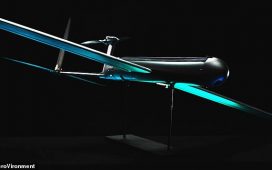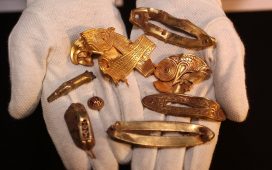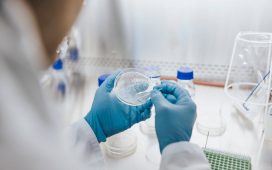
Aditya-L1 sits aboard its launch vehicle at the Satish Dhawan Space Centre in Sriharikota, India.Credit: ISRO/EPA-EFE/Shutterstock
On 2 September, India launched its first spacecraft to study the Sun, marking another aerospace engineering success for the nation, hot on the heels of landing a spacecraft on the Moon last month.
After a journey lasting 1.5 million kilometres and 4 months, the solar mission, named Aditya-L1, will join four other spacecraft circling a point in space known as Lagrange point 1 (L1).
Following the launch, Aditya-L1’s project director at the Indian Space Research Organisation (ISRO) in Bengaluru, Nigar Shaji, said that the mission “will be an asset to heliophysicists of the country and even the global scientific fraternity”.
But with L1 already busy with solar missions and other solar observatories orbiting Earth, what makes the Indian mission different?
Solar flares and storms
Aditya-L1 is “a unique observatory”, according to solar physicist Dibyendu Nandi at the Indian Institute of Science Education and Research Kolkata. He says it combines instruments that address three outstanding problems in solar physics, namely how stars such as the Sun sustain their super-hot outer layer; how variations in the Sun’s magnetic field affect Earth’s atmosphere; and how the Sun’s magnetic fields create violent solar storms.
China’s first solar observatory aims to solve mysteries of the Sun’s eruptions
Aditya-L1 is equipped with seven instruments to observe the Sun’s layers. Using electromagnetic and particle detectors it will, from a safe distance of 148.5 million kilometres, examine the outer atmosphere, or corona, of the Sun. The mission is expected to throw light on the properties of the corona and what prompts coronal mass ejections (CMEs) — large expulsions of electrons, ions and magnetic fields. Knowing how CMEs vary with latitude and longitude on the Sun and over time will help researchers to understand the physics of these events.
The mission will also examine the Sun’s lower atmosphere, called the chromosphere, and the boundary between the Sun’s atmosphere and its interior, called the photosphere.
India will be taking some new technology to the craft’s vantage point. Annapurni Subramaniam, director of the Indian Institute of Astrophysics in Bengaluru and her team have developed the Visible Emission Line Coronagraph (VELC) for Aditya-L1 to monitor the inner corona. “The uniqueness of the VELC is its simultaneous observations in multiple wavelength bands closer to the solar limb,” she says, referring to the darker edges of the Sun.
“Data from VELC will help to understand the initial acceleration of coronal mass ejections that are the most dangerous space-weather events,” she adds.
Scientists are also looking forward to data from Aditya-L1’s Solar Ultraviolet Imaging Telescope (SUIT), which will help them to study coronal heating and solar-wind acceleration. SUIT could, for the first time, provide images of the Sun’s disk — the outer visible layer of gas and dust — in the near=ultraviolet (light with wavelengths of 200–400 nanometres). “Such images have never been obtained and they will help us understand the crucial coupling or connections among the different layers of the solar atmosphere,” says Durgesh Tripathi, an astrophysicist at the Inter-University Centre for Astronomy and Astrophysics in Pune, India.
Lagrange 1
Aditya-L1 will enter orbit around L1, one of five Lagrange points in space where the gravity between two bodies — in this case, the Sun and Earth — cancel each other out, such that a spacecraft there can remain in position with minimal use of fuel. L1 offers a good view of the Sun.
NASA spacecraft ‘touches’ the Sun for the first time ever
It will join four other craft also orbiting L1: the 1995 European Space Agency Solar and Heliospheric Observatory (SOHO); NASA’s 1997 Advanced Composition Explorer (ACE); NASA’s 2009 Wide-Field Infrared Survey Explorer (WISE); and 2015’s Deep Space Climate Observatory (DSCOVR), a mission involving NASA, the US National Oceanic and Atmospheric Administration and the US Air Force.
Missions such as Aditya-L1 are providing more-accurate measurements than before thanks to advances in remote-sensing instrument design, says Juha-Pekka Luntama, who heads the space-weather office at the European Space Operations Centre in Germany. “All these missions complement each other, and it is a great scientific opportunity to have missions operating around the same time.”
Space weather
Aditya-L1 will also help scientists to understand how connections between, and the dynamics within, the corona and chromosphere drive space weather, says Subramaniam.
The Sun has a large and complex magnetic field which waxes and wanes, reaching a peak every 11 years, whereupon the field’s north and south poles flip. The current solar cycle is predicted to reach its maximum in 2024–2025. With scientists expecting solar activity to keep rising over the next two years, “this is a good time to collect data”, says Luntama.
Electrical and electronic infrastructure on Earth can be vulnerable to the fluctuating magnetic fields of space weather, with data corruption or equipment failure possible. “As our dependence on space technology, and technology in general, is increasing in leaps and bounds, it has become a necessity to protect our technological assets from space weather and solar activity,” says Subramaniam. Timely and accurate space-weather forecasts will help to protect crucial infrastructure and to ensure astronauts’ safety during future missions to the Moon and Mars, adds Luntama.
In addition to gathering data on the Sun, Aditya will monitor the solar wind at L1. Nandi says this will “help characterize the space weather just before it impacts the Earth, and of which we would like to have advance knowledge”.












